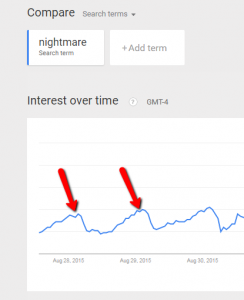
If you’re considering a move to a subscription model, you’re in good company. From baby diapers to snowboards and luxury cars, online subscriptions and automated payment models are on the rise as brands seek to meet consumer preferences.
Before you develop an online subscription business, you first need to understand which subscription type will appeal to your customer base, work best for your products or services, and align with organization’s business goals. You might even consider using multiple, targeted models, depending on your markets or demographics.
At a 10,000-foot level, there are three basic subscription-based payments to consider: the prepaid subscription model, the term-based contract subscription, and usage-based billing.
Prepaid Subscription Model
With a prepaid subscription model, there is no long-term commitment. Instead, consumers prepay on a monthly or annual basis, and services end when payments stop. Think Netflix. From antivirus subscriptions to Dollar Shave Club, prepaid subscription models are familiar to most consumers – which can be an advantage for brands who want to minimize barriers to adoption. Another advantage of this model is its simplicity, as it’s the easiest to implement. That said, added infrastructure to process these recurring payments, additional processing fees, and customer churn are all important factors to bring into your decision.
Term-Based Contract Subscription
Another subscription payment model to consider is the term-based contract subscription. If you’ve ever had a contract with a cable or satellite provider, you’ve partaken in this model as a consumer. In essence, the customer commits to a set term of service (12 months, 2 years, etc.) but is billed on a different cycle such as on a monthly or quarterly basis. One key advantage is the financial predictability this model brings, but in exchange for commitment, brands must often entice consumers with a discount.
Usage-Based Billing
The third and final common subscription-based payment model is usage-based, which operates exactly as you would expect. Consumers only pay for what they use after they’ve used it. For the consumer the appeal is obvious, but this model can provide a level of unpredictability for all parties. Have you ever received a bill and thought – Did I really use that much data? The “surprise” factor can lead to charge disputes and unpaid bills that roll into collection. As a result, many businesses leverage usage-based billing only for things like overages or special services on top of a regular prepaid or term-based subscription. For example, a consumer pays a fee in addition to their monthly cable bill for on-demand movies. Another typical scenario is a model where the consumer pays based on the number of people who have access, such as a telephone or video conferencing service.
When considering these three models, don’t forget to account for infrastructure costs, changes to administrative operations, and how payment methods for different levels of subscriptions might impact transaction fees. Organizations should also consider which model works best to support the peaks and troughs often seen with subscription models, choosing solutions that allow for both flexibility and scalability.
No matter which model is chosen, the shift to subscriptions requires brands to change how they think. They need to think beyond monetizing a product, to monetizing consumer relationships and experiences. Today’s consumer values time and freedom above all else. As you determine which model (or combination of models) is best, be sure to understand what not only meets your business needs, but also provides the simplest, most enjoyable experience and consistent value for your customer.
Digital & Social Articles on Business 2 Community(63)
Report Post




